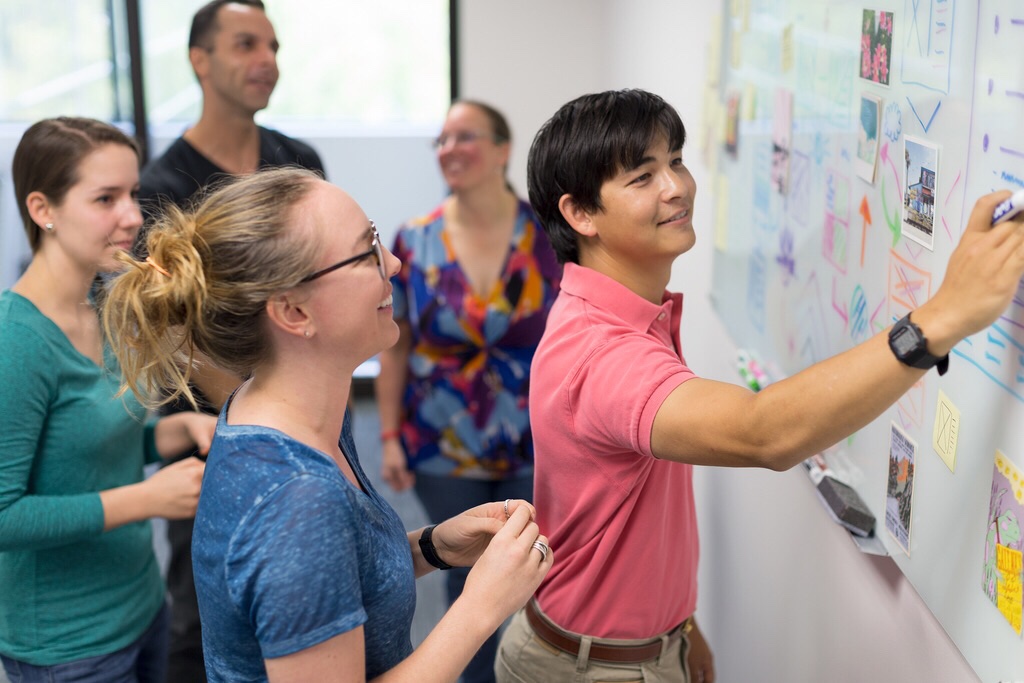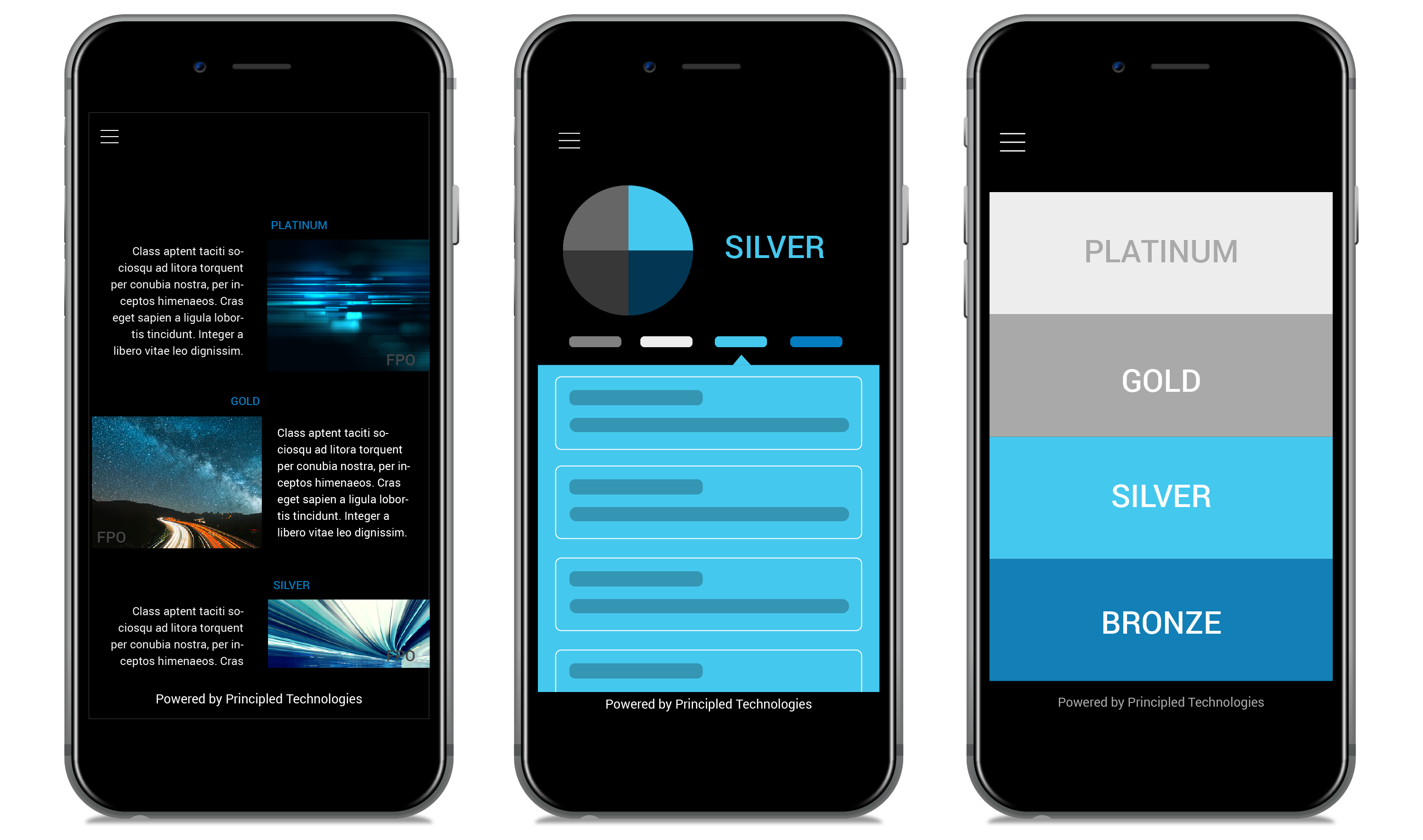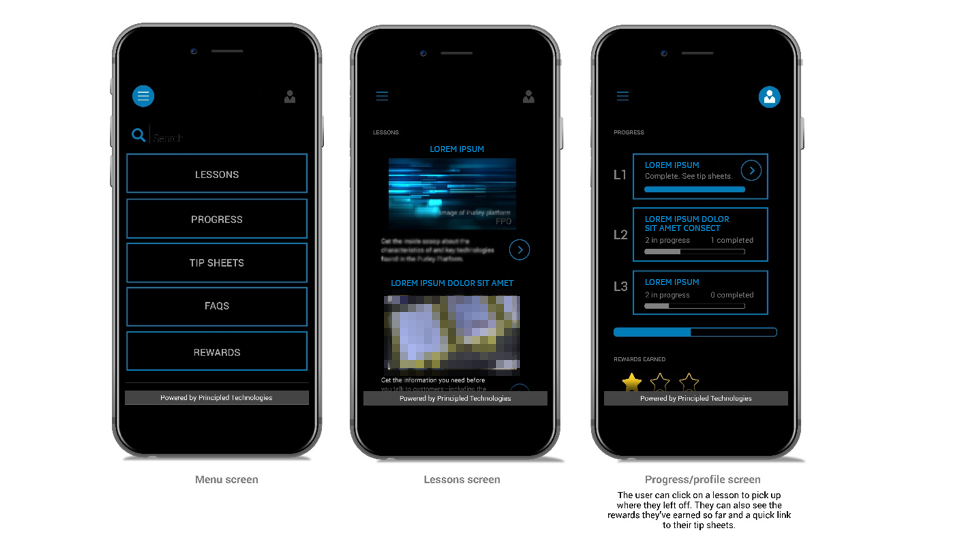In today’s evolving business world, you may only have a few weeks to design and build an app or elearning module to train an audience on a new company offering or service. The experience needs to entice users to play with it, and the content should compel learners to consume it.
In a traditional content-first approach, clients usually provide course content in the form of PowerPoint or Word files. This content typically aims to promote the new offering or service internally. The Instructional Designer (ID) then reviews the content, breaks it into meaningful chunks, adds examples and scenarios to help the content stick, and creates a storyboard for the client to review. Once the client approves the content storyboard, the ID brings in the graphic designer and they design a cohesive look and feel for the elearning product. They produce screen mockups, which include the content, to share with the client. Next, the ID brings in the development team, and they build a program from the storyboard and mockups, much like a builder would construct a home from a blueprint. In this model, the ID is the solution architect and owner of the vision, dictating both the design and the development.
What’s wrong with this approach? Here are a few things that can happen:
- Clients are often unsure which content will be helpful at the start of the project, so they provide everything that exists. Much of that content may be superfluous to what’s needed for effective behavior change and/or missing key information. Storyboarding from this content may not lead to an effective elearning product.
- Storyboards, like architectural blueprints, can be challenging to decipher. Clients (and internal team members) have a tough time envisioning the end product from a storyboard, which can result in significant changes later. They can also become frustrated by the back-and-forth process.
- The content creation and storyboard approval process can linger for weeks, resulting in a crunched timeline for graphic design, asset development, (e.g., videos, animations, and photos) and programming.
- The ID brings the rest of the team in too late to help influence or enhance the design.
A content-first approach is the tragic flaw in instructional design. PT advocates an experience-first approach.
PT’s experience-first approach looks like this:
Step 1:
Immediately after the client kickoff, the entire project team meets to whiteboard various “front door” experiences. The front door designs demonstrate how the user will enter the solution, navigate through it, and access key features. Mobile first (e.g., how a learner will experience the solution on a phone or tablet) considerations are a key part of the brainstorming session. Then, the team selects a few concepts from the pool of ideas.
Step 2:
The team shares 2-3 different graphic mockups of the user experience with the client. At this point, the mockups do not include content.
Step 3:
The development team begins developing the selected experience, typically for mobile first. Meanwhile, the ID storyboards content to fit the selected experience and helps determine the full set of needed interactions. It’s important to note that on projects with quick turnarounds, the storyboard may circulate only internally.
Step 4:
The client sees the first interactive prototype with content (there may be only a few screens at this point).
Ongoing:
From this point forward, the team leader provides the client with a new link every few days as the team adds new screens and features. By the client’s deadline on week three, the solution is complete and ready for launch.
This approach mirrors the agile software development paradigm. From the “Manifesto for Agile Software Development” values:
- “Individuals and interactions over processes and tools
- Working software over comprehensive documentation
- Customer collaboration over contract negotiation
- Responding to change over following a plan”[1]
PT takes an approach to elearning that is more like agile software development than the traditional content-first approach. We feel an experience-first paradigm for rapid learning design and development not only addresses the tragic flaw in instructional design, but entices users, engages the learner, utilizes the expertise of all team members, democratizes design, and results in a more effective end product.








